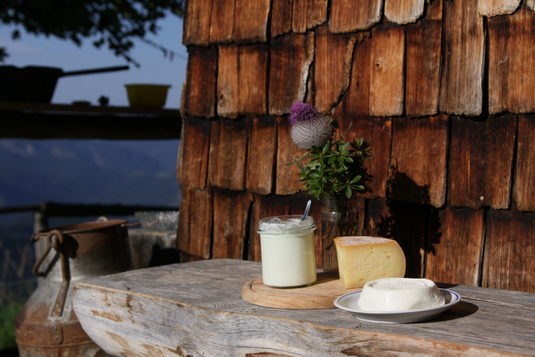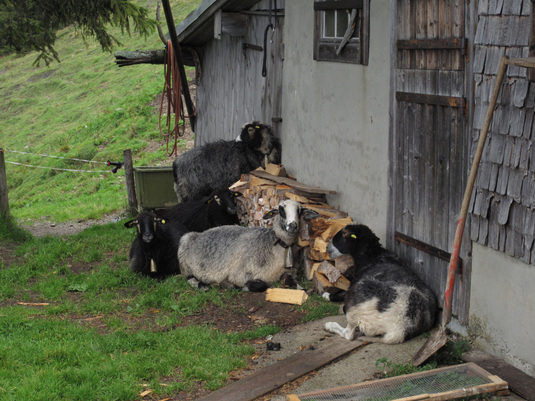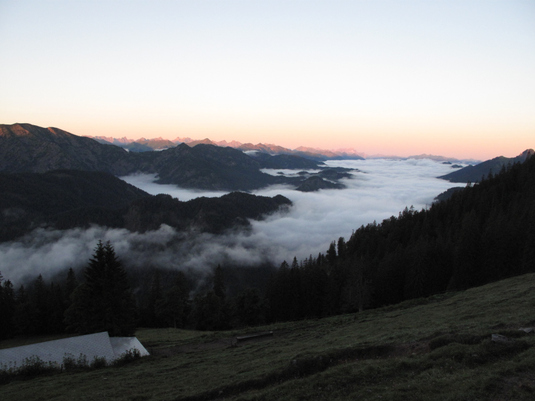From the Stable to the Table
What Do We Eat When We Eat Raw-Milk Cheese?
07.04.2017
By Lena Thurn and Maria Fixemer
The question of which cheese to buy is not simply a question about what to eat for lunch—at least not for the US cultural anthropologist Heather Paxson and other so-called post-Pasteurians who set a specific value on their food. Post-Pasteurians don’t believe that pasteurization—which means to heat treat raw milk in order to kill all the microorganisms, the good and the bad, that naturally live inside milk—necessarily enhances the quality of food.

Raw-milk products—a microbial farm. Photo: Lena Thurn.
For them, the Pasteurian age—and Paxson claims that US citizens in general still live in a Pasteurian world—is the industrial age of sterilizing everything in order to avoid potential “biohazards” and legal vulnerability, while accepting the loss of all the healthy, naturally occurring microbes and germs. Pasteurization is the simple option for ministries and health departments, which is why specific rules on milk products exist. In the USA, these rules are slightly stricter than in the EU—which proves that raw-milk cheese plays a specific role in the cultural traditions surrounding food in countries like France, Switzerland, or Germany, where raw-milk products only have to be labeled. Still, the question of whether to buy raw-milk cheese or not also exists in Europe. It is a question that ranges between two contrasting poles: safety and freedom. And this, in turn, makes the question about the cheese a genuine political question. Drawing on Foucault’s “biopolitics”, Paxson refers in her articles on raw-milk cheese to “microbiopolitics.”

Some of the workers who contribute to making raw-milk cheese—at least, some of the ones we are able to see! Photo: Lena Thurn.
The destiny of microbes in pasteurized cheeses is clear: they fall victim to an extensive clean-up operation. But the advantage of this process is also clear: pasteurized cheese is clean. It is free from human pathogens like Salmonella, Listeria (which in particular poses a dangerous risk to unborn babies), and Escherichia coli (some of these bacteria are better known as the cause of the EHEC virus). Health departments find unambiguous words to advise people with weakened immune systems and pregnant women to eat only products made from pasteurized milk. Paxson, however, criticizes, from a feminist point of view, this intimidation of pregnant women and the interference of health departments and medical professionals in people’s personal lives—and she certainly has a point. Dangerous or pathogenic microbes in raw-milk cheese are extremely rare and can be avoided through proper hygiene, which starts in the stable and ends on the table. Cheese makers know that producing cheese means cleaning and washing up again and again and again. Apart from that, raw-milk cheese has its benefits.

The macro-farm—a mountain pasture in the Bavarian Alps. Photo: Lena Thurn.
Curious? Read more on Seeing the Woods

